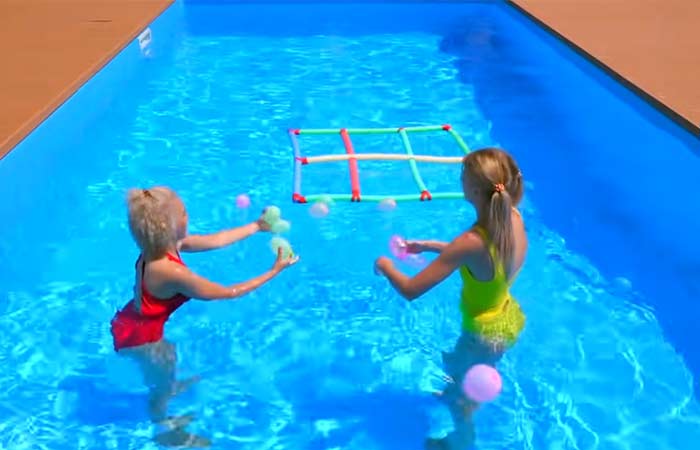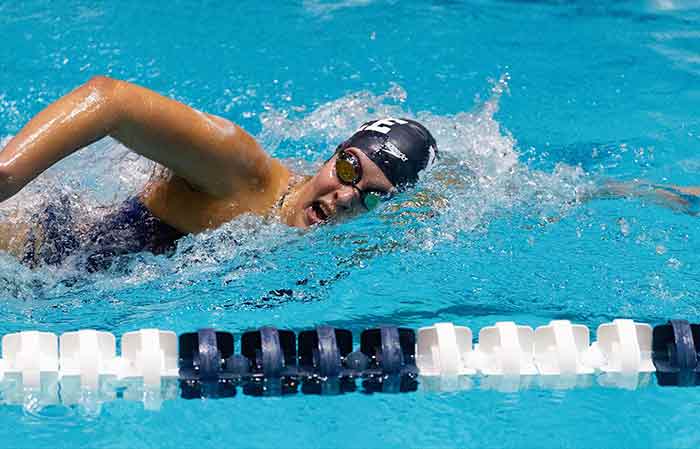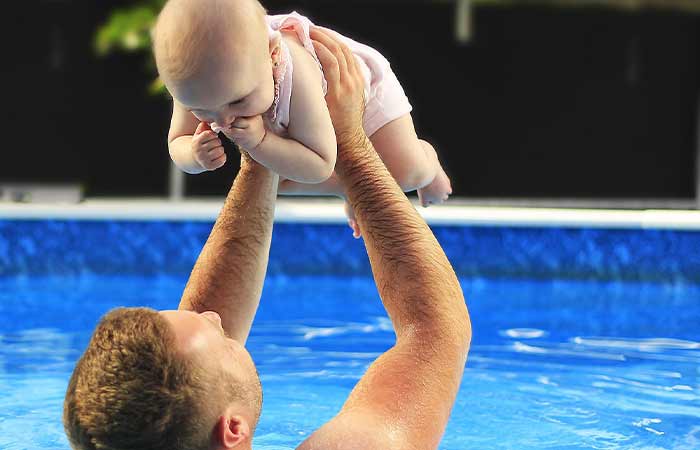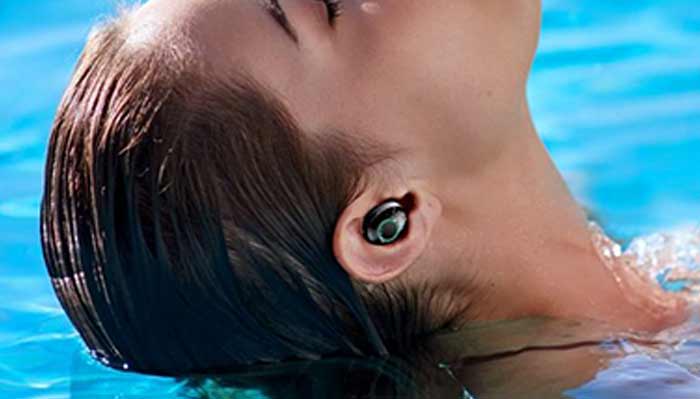How to Swim Freestyle: Technique, Tips & Drills
Freestyle stroke or front crawl technique is basically a way of swimming that mimics crawling with your hands(pulling) in horizontal position facing down while kicking with your feet to move forward in water.
Owing to the fact that there are limited movements and body coordination, it is considered as the fastest of all the known swimming styles. It’s common at swimming events such as the Olympic Games and others where it has the highest number of events for both men and women.
This should not however be confused with freestyle swimming which refers to the swimming in which there are very few swimming rules to abide by. You are allowed to use any stroke though the front crawl is the most common due to its speed. As long as you’re moving fast, you’re good to go. While the FINA (International Swimming Federation) has a few rules to it, its general approach is to limit the strokes and keep the swimmers safe.
Read on learn the technique, the form, breathing, arm movement, flutter kicks, tips, drill workouts history and more
Technique
The technique for the freestyle is arms circling alternatively while the feet perform flutter kicks fast. The body remains on a horizontal axis and keeps tilting to the side as one arm reaches ahead and the other pushes back on the water.
The specific movements are as follows:
Front Crawl- Arm Movements
The approach is for the arms to alternatively stroke and recover. As one hand goes over the head and forwards, the other one should be paddling the water below the body. The arms move in complete circles from the front to the hip area. At the start of the move, the arms are stretched forwards to streamline the body.
The first phase of the arm movements is when one arm is extending forwards while the other one is pointing directly downwards while pushing the water backwards. The arm in front then goes into a downsweep in which it moves down. The upper arm will move backwards and inwards as the forearm goes downwards. The arm should have a high elbow.
The forearm catches the water as it’s vertical and the palm is facing backwards. After that comes the insweep in which the arm pulls at the water backwards and inwards for the upper arm. The forearm moves towards towards the area below your tummy.
The next phase is the upsweep in which your hand will switch the direction from going towards your belly to go towards your hip. It does this while pushing the water back.
As the hand nears the hip, the body tilts to the other side such that it’s away from the paddling hand. Once at the hip level, the arm releases the water then starts the recovery phase which entails the arm moving forward and ahead of the body.
The hand will move past the head and into the water again for the next stroke. At this stage, the body should return to the original horizontal level for proper propulsion.
The arms remain in sync by ensuring that one arm goes into the water as the other one starts the stroke again. The reason this style is fast is due to the double propulsion of the hands. As one hand is moving underwater to propel the body, the other one is already picking up the next stroke. By the time one hand completes its stroke, the other one would already be in the middle of its own stroke.
The arm movements form what’s known as the front-quadrant swimming.
Flutter Kicks -Legs
The primary leg movements for the freestyle stroke is the flutter kick. Basically, your legs will be moving up and down in a restricted angle allowing you to move forwards. The feet will be moving faster than the hands in the flutter kick.
From a starting point of a streamlined body with the feet stretched backwards, move the legs up and down within a narrow angle. The movement should occur in the whole leg rather than the lower leg alone. Your knees should be flexible but shouldn’t move too much. Your feet should be as straight as possible.
The motion is such that, as one leg moves up, the other one moves down in quick succession. The flutter kick goes on without giving heed to the motion of the arms. In fact, you can perform the flutter kick on its own and still move ahead.
Combined with the front crawl of the arms, the flutter kicks are effective both at moving you ahead and balancing your body in the water.
3. Body Movements
The freestyle stroke requires you to swim horizontally while facing the bottom of the pool. As you make flutter kicks and arm cycles. The body will move from one side to the other while turning to the side of the body with the arm in the water. This makes it easy for the other arm to recover above the water where there’s very little resistance.
The head and the body move about on an axis that’s about 45 degrees from the horizontal plane on either side. This way, you can move the head to one side for breathing purposes. The body also needs to be as flat as possible to reduce the drag on your movement.
Breathing
There are various ways to breath when doing the freestyle stroke. However, they all occur when you’re on your side and one arm is recovering for the next stroke. You breath in as soon as the head comes out of the water then breath out when it’s in the water.
While you can breath with every stroke and on every side the head turns to, you’re better off taking breaths fewer times for every stroke. Most swimmers choose to breath every second stroke on the same side of the body, or every third stroke. The faster you move, the fewer your breathing windows should be.
5. Starting
For a start, you’ll jump into the water with your arms the first part of the body to come into contact with the water. Your body should slide into the water with your feet being the last part to go in.
You should dive into the water then, once submerged, glide for a while with the feet doing flutter kicks and the hands stretched forwards to make the body as streamlined as possible. After that, break the water with the head and the first hand to take the stroke. At this time, you should keep doing the flutter kicks.
Turning and Stopping
When turning in a competitive position, both of your hands should touch the wall at the same time and on a horizontal plane. This means that, as you near the wall, you should glide for a while until your hands come into contact with the wall.
As your body comes towards the wall, bend the elbows then turn to one side and push yourself against the wall. For the best results, let your hands leave the wall one at a time. The hand leaving the wall first should start the glide by stretching out straight ahead.
While the hands are pushing against the wall, your feet should be coming under your body with slightly bent knees. As soon as the last hand is leaving the wall, the feet should also touch the wall and push against it. As the feet come off the wall, glide for a while then start the strokes.
For a stop, both of your hands should touch the wall at the same time. Again, it means that, as you near the finish line, you should do a little gliding with your hands stretched forwards to touch the wall.
Tips for a Faster Freestyle without getting tired
While already the fastest swimming style, the freestyle can be made faster with the right techniques. These techniques will make you faster and save on your energy as they’re based on years of study and research.
They include the following:
1. Push your chest down
Known as pressing the buoy, pushing down your chest is vital in helping you keep the proper balance when doing the freestyle stroke. It helps keep the body horizontal and keeps the legs up thus reducing drag on your body and helping you move faster. This can be maintained properly with straight legs as well.
2. Swim on your sides
While it’s a horizontal swimming style, moving to your sides when doing the freestyle stroke helps you generate more power for the swim thus making you faster. This comes from the fact that you’ll be using the arm and back muscles for the stroke rather than the arm muscles alone.
3. Keep your head in a neutral position
Your head should act as the apex of your whole body. Even when the body moves from side to side, the hide should only be tilting on an axis. Looking forward (rather than down) may make you drop your lower body and thus increase the drag on your body.
When your lower body drops, you’ll need harder kicks to maintain the same speed. As such, your head determines the actions of the whole body with this style. Also, keeping a neutral head can lead to neck strain.
4. Breath in on the sides, not by lifting your head
Just like keeping your head in a neutral position helps you keep your body horizontal, breathing on the side helps you maintain the axis from the head to your hip region. To breath, simply role to your side and take in air rather than lifting up your head and disrupting the strokes.
5. Exhale in the water
The secret to speed when swimming is to relax your body and just flow in the water. That means you should avoid holding your breath at any time of the stroke.
For example, after breathing in when your head comes out of the water on the side, you should continuously breath out while the head is under water. The exhaling should be continuous and only end with the inhalation.
These tips will keep your speed up and help you conserve energy. They apply whether you want to compete or swim for fun.
Drills (Workouts/Exercises)
Somebody somewhere said that practice makes perfect. That was right! To improve your front crawl technique, you need exercises that will help you balance, pull, breathe and kick. Following is a video with some of the best drills.
History & Inventors
While freestyle swimming dates back to the Stone Age, the first time it was recorded was in the late 1800s. John Trudgen, he of the trudgen swimming style, observed South Americans using this style in a competition in which they won over their English competitors.
As a swimmer himself, he studied the style and modified it then introduced it to England in 1873. From there, the style would spread around the world while being modified further to increase speed and its general efficiency.
The modern freestyle stroke is credited to the Australian swimming instructor, Richard Cavill. His sons, Richmond Cavill (Australian champion swimmer) and Tums later made modifications and developments which lead to the birth of Australian crawl. These developments have defined the style for a long time.
Charles Daniels, an American swimmer, later a six-beat kick, thereby creating the “American crawl”.
The modern variations of the freestyle stroke don’t deviate much from the original one and what Richard Cavill created many years after Trudgen. A few major changes have occurred with the main result being less time being spent to cover distances with this style.
Among these developments include the location of the freestyle competitions.
From the late 1800s, they were held in open water bodies with the 1896 Olympics occurring in the Mediterranean Sea, the 1900 Olympics in the Seine River, the 1904 Olympics occurring in an artificial lake, and the 1906 events held in the Mediterranean Sea.
It was until the 1908 Olympics that a 100-meter indoor pool was built for swimmers.
Another major change has been the measuring of distance and the time. Electronic timing began in the 1912 Olympics in Stockholm. Also, the distance for swimming has changed from yards to meters and back a few times. Presently, the available categories are the 50, 100, 200, 400, 800 and 1500 meter distances.
The other major developments have been in the cloths won during the freestyle swims, and the design of the pools. The clothing has moved from full body suits that cause lots of drag on the body to the modern sleek swimwear.
The pools have benefited from modern technology where lanes are designed to eliminate currents and give the swimmer maximum output.
Further Reading
Following is a list of articles with more swimming information and other water sports
Swimming Strokes/Styles
- Different Types of Swimming Strokes, Styles & Names
- What is Sculling in Swimming? How to do it
- How to Tread Water- Techniques, Benefits & Exercises
- How to Swim Breaststroke: Kick, Pull, Form, Drills & Tips
- Butterfly vs Breaststroke Swimming
- How to Swim Elementary Backstroke- Technique, Drills & Tips
- How to Swim Sidestroke-Technique,Trudgen &Combat Drills & Tips
- How to Swim Backstroke-Technique, Drills & Tips
- How to Swim Butterfly: Technique, Drills & Tips
Swimming FAQs & Ideas
- How Many Calories Does Treading Water Burn?
- Can you Swim with Contacts in the Ocean/Pool?
- Can you Open your Eyes in the Salty Ocean or Chlorinated Pool Waters?





